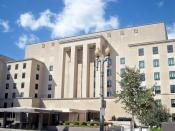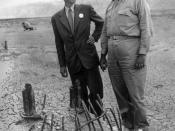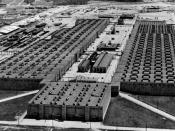The Manhattan Project was one of the most ambitious scientific efforts in the history. It out shadowed anything previously undertaken: a crew of over 100 000; 37 installations in 13 states (some, like Hanford complex, the size of a small tows); more than a dozen of university laboratories from New York to California, and a secret compound on a desert mesa in New Mexico were involved (Stoff, Fanton & Williams, 1991). The Manhattan Project was, among other things, a gigantic industrial and engineering construction effort, run by the military under great secrecy, rapidly accomplished, using unorthodox means, and dealing with uncertain technologies.
Over the years, various aspects of the Manhattan Project and its controversial role in history have been researched and analyzed. This paper looks at the Manhattan Project from the project management prospective and outlines the major factors that contributed to its scientific and technological success.
How it Started
On August 2, 1939, a simple two-page letter to President Roosevelt set in motion a complex sequence of events that led to the creation of the Manhattan Project three years later.
The letter was a plea from Albert Einstein, the Nobel Prize-winning physicist, for the development of a fantastic new explosive from uranium. Einstein warned the President that Nazi Germany was trying to purify Uranium-235, which might in turn be used to build an atomic bomb. The letter beseeched President Roosevelt to counter German threat with an American atomic bomb project.
The atomic bomb began as a competition between two nations not yet at war. During the World War II, all major powers, including Great Britain, Japan, and Soviet Union, embarked on their own atomic quests, but for the most part, the race was between Germany and the United States. President Roosevelt's only action in1939 was the creation of a...


